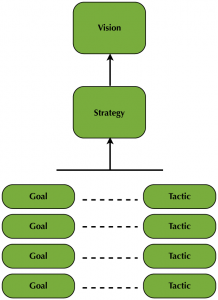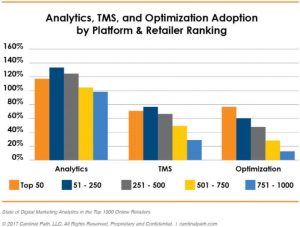How do you turn customer insights into actionable data? Columnist Jordan Elkind offers techniques for aggregating your customer data and better using it for your marketing strategy.
 As marketers, we all know the importance of data in informing our customer relationship and communications decisions. In recent years, marketing teams have prioritized creating a more tailored customer experience through investing in new advanced analytics tools and even building out entire teams devoted to the task of mining for customer insights.
As marketers, we all know the importance of data in informing our customer relationship and communications decisions. In recent years, marketing teams have prioritized creating a more tailored customer experience through investing in new advanced analytics tools and even building out entire teams devoted to the task of mining for customer insights.
But an abundance of customer insights does not always lead to more data-driven marketing strategies. The average retailer’s data is stuck in multiple silos, and integrating it into existing marketing campaigns typically involves lengthy exports and uploads.
The good news: Smart marketing teams today are finding new ways to make the connection from insight to action. While every organization has its unique hurdles, these specific techniques can be summed up into the three tips below to uncovering more actionable data.
Data consolidation
It’s near-impossible to act on your customer insights if they’re located in myriad data silos. Consolidating and organizing your data are paramount in creating a strong foundation in data-driven marketing, and there are many ways to do this.
As an online retailer, leverage the unique user ID that you assign to shoppers to track purchases over time. From there, you can simply layer in engagement metrics on top of this data.
Omni-channel retailers face a larger challenge in connecting in-store shoppers to their online purchases. In spite of this, many brands have made great strides in consolidating their data, and for those which have not yet, there are great partners that can help stitch online and offline data together.
Managing accessibility
This second piece is where many organizations lose their footing. Marketers often have serious difficulties accessing customer data or the insights they’ve generated from it.
While larger organizations may have seasoned in-house data science teams to uncover customer insights, it can be a lengthy process for a marketer to request a simple stat like, “Which customers are most likely to buy knits this week?” Often, by the time a submitted ticket from Marketing is processed by the Data Science team and returned to the marketer, the stats may already be out of date. If a campaign needs to go out today, this is not that helpful.
A marketer-friendly interface is crucial to making customer insights accessible and rapidly actionable. As a marketer, you need to be able to pull a list of customers on your own and run a campaign from that real-time data.
Measuring success
Finally, a customer-obsessed organization needs to measure success on a customer level. You can’t measure this in your email provider or your social tool; these tools are only measuring within their own silo.
Though omni-channel marketing is now commonplace, most marketers still struggle to attribute revenues to the appropriate campaigns. This becomes more challenging due to the fact that every third-party agency and partner is focused on measuring the ROI of their standalone tool or channel.
Try to implement and action on channel-agnostic success metrics that are the result of aggregated individual customer behaviors, like predicted customer lifetime value (CLV), or leaky bucket ratio.
To find more deeply meaningful success metrics, retailers typically go to their analytics team to use control groups, but again, they still have to wait a week or more for results. Most organizations need to be empowered to get real-time feedback themselves. When all of these things are in place, teams can begin answering the tough questions.
Final thoughts
The process of aggregating your customer data into more actionable insights can seem like an overwhelming endeavor. The key to moving forward starts with a clean slate of consolidated customer data.
From there, prioritize finding an interface and team strategy for the marketing team to easily access those insights, integrate them into different channels, and measure real-time results.
Some opinions expressed in this article may be those of a guest author and not necessarily Marketing Land. Staff authors are listed here.
Marketing Land – Internet Marketing News, Strategies & Tips
(17)









